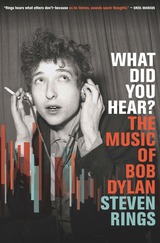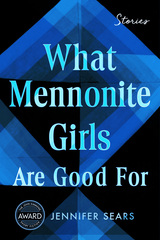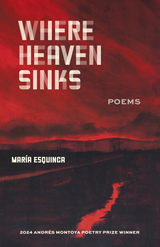6 books about Cry
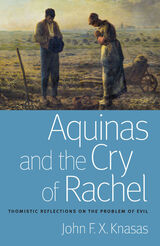
Aquinas and the Cry of Rachel
John F.X. Knasas
Catholic University of America Press, 2013
In Aquinas and the Cry of Rachel , John F. X. Knasas explores Thomas Aquinas's philosophical thinking about evil, and brings the results into discussion with the contemporary theodicies - philosophies of the problem of evil. It examines the relation of the human person and human nature to nature as a whole.
Generally speaking, possible philosophical accounts for evil are two kinds: cosmological or personal. The cosmological account has evils rebounding to the perfection of creation. The personal account would have evils suffered rebounding to the good of the sufferer. Knasas argues that for Aquinas no philosophical resolution of these two kinds of accounts
is possible. This argument is based upon Aquinas's understanding of the human as an intellector of analogical being. Such an understanding establishes two truths. First, the human is by nature only a principal part of the created whole. Second, there is the philosophically discernible possibility of supernatural elevation by the creator.
Hence, as far as philosophy can discern, evil may have a natural explanation or it may have a supernatural one. The Thomistic philosopher has no answer as to why evil exists because that philosopher discerns too many possible ones. In that respect, Aquinas's thinking on evil is similar to his thinking about the philosophical knowledge of the biblical
truth of the world's creation in time. Such a creation is one metaphysical possibility among others. Some authors that Aquinas and the Cry of Rachel considers are: Anthony Flew and Albert Camus, Jacques Maritain and Charles Journet, William Rowe, Marily McCord Adams, William Hasker, John Hick, David Ray Griffin, David Hume, Diogenes Allen, J. L. Mackie, Alvin Plantinga, Richard Swinburne, Bruce Reichenbach,
Brian Davies, and Eleonore Stump.
Generally speaking, possible philosophical accounts for evil are two kinds: cosmological or personal. The cosmological account has evils rebounding to the perfection of creation. The personal account would have evils suffered rebounding to the good of the sufferer. Knasas argues that for Aquinas no philosophical resolution of these two kinds of accounts
is possible. This argument is based upon Aquinas's understanding of the human as an intellector of analogical being. Such an understanding establishes two truths. First, the human is by nature only a principal part of the created whole. Second, there is the philosophically discernible possibility of supernatural elevation by the creator.
Hence, as far as philosophy can discern, evil may have a natural explanation or it may have a supernatural one. The Thomistic philosopher has no answer as to why evil exists because that philosopher discerns too many possible ones. In that respect, Aquinas's thinking on evil is similar to his thinking about the philosophical knowledge of the biblical
truth of the world's creation in time. Such a creation is one metaphysical possibility among others. Some authors that Aquinas and the Cry of Rachel considers are: Anthony Flew and Albert Camus, Jacques Maritain and Charles Journet, William Rowe, Marily McCord Adams, William Hasker, John Hick, David Ray Griffin, David Hume, Diogenes Allen, J. L. Mackie, Alvin Plantinga, Richard Swinburne, Bruce Reichenbach,
Brian Davies, and Eleonore Stump.
[more]

Cry And Dedication
Carlos Bulosan
Temple University Press, 1995
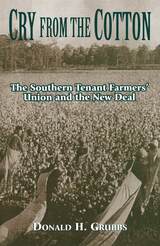
Cry from the Cotton
The Southern Tenant Farmers' Union and the New Deal
Donald Grubbs
University of Arkansas Press, 2000
The Southern Tenant Farmers' Union was founded in eastern Arkansas in 1934 to protest the New Deal's enrichment of Southern cotton barons at the expense of suffering sharecroppers, both black and white. Their courageous struggle, in the face of determined and often violent resistance from their landlords, is the subject of this thorough study from Donald H. Grubbs, which was published to critical acclaim in 1971. Cry from the Cotton was the first full-scale look at the STFU and its leaders. It discloses that, although the union operated under noticeable socialist party sponsorship in its infancy, it drew much more upon the native Southern evangelical and populist traditions, much as the civil rights movement would do twenty-five years later. Grubbs convincingly demonstrates that while the STFU failed to gain immediate social justice for its members, it resulted in the formation of the Farm Security Administration, which even today continues to aid the rural poor, and it played a large part in forcing the formation of the La Follette Civil Liberties Committee, whose spotlight on management terrorism helped the CIO toward success. The volume stands as a classic on labor issues and class struggle and still echoes with the haunting plea of the dispossessed for equity.
[more]
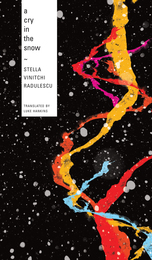
A Cry in the Snow
and Other Poems
Stella Vinitchi Radulescu
Seagull Books, 2018
Stella Vinitchi Radulescu’s poetry dwells in spaces of paradox, seeking out the words, metaphors, and images that capture both the peaceful stillness of snow and the desperate cry of human experience. A Cry in the Snow often draws on these two fertile tropes: the beauty of nature and the power and limitations of language. A trilingual poet who has published in French, English, and her native Romanian, Radulescu seeks to harness the elemental aspects of human experience, working between language and the mysterious power of silence. Combining poems from two French-language collections, Un Cri dans la neige (A Cry in the Snow) and a poetic prose sequence, Journal aux yeux fermés (Journal with Closed Eyes), this collection presents the distinctive and powerful French poems of Stella Vinitchi Radulescu to an English-language readership for the first time.
[more]
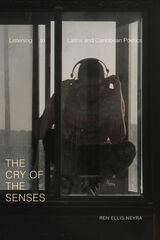
The Cry of the Senses
Listening to Latinx and Caribbean Poetics
Ren Ellis Neyra
Duke University Press, 2020
In The Cry of the Senses, Ren Ellis Neyra examines the imaginative possibility for sound and poetics to foster new modes of sensorial solidarity in the Caribbean Americas. Weaving together the black radical tradition with Caribbean and Latinx performance, cinema, music, and literature, Ellis Neyra highlights the ways Latinx and Caribbean sonic practices challenge antiblack, colonial, post-Enlightenment, and humanist epistemologies. They locate and address the sonic in its myriad manifestations—across genres and forms, in a legal trial, and in the art and writing of Xandra Ibarra, the Fania All-Stars, Beatriz Santiago Muñoz, Édouard Glissant, and Eduardo Corral—while demonstrating how it operates as a raucous form of diasporic dissent and connectivity. Throughout, Ellis Neyra emphasizes Caribbean and Latinx sensorial practices while attuning readers to the many forms of blackness and queerness. Tracking the sonic through their method of multisensorial, poetic listening, Ellis Neyra shows how attending to the senses can inspire alternate, ethical ways of collective listening and being.
[more]
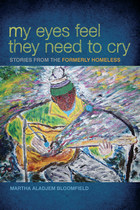
My Eyes Feel They Need to Cry
Stories from the Formerly Homeless
Martha Aladjem Bloomfield
Michigan State University Press, 2013
As intimate as they are inspiring, these stories of transformation, drawn from the oral histories of formerly homeless adults, testify to the determination of the human spirit and the healing power of sharing one’s journey. This gripping collection gives voice to the traditionally voiceless, inviting men and women from a variety of cultural and ethnic backgrounds to share their experiences of what it was like to live on the streets, in cars, under bridges, and of how they discovered the inner motivation to change the course of their lives in a positive direction. An important contribution to understanding how destructive patterns can be broken, this book examines some key questions: How do those who have suffered from homelessness and the hardships that accompany it find the inspiration and courage to break the seemingly endless cycle, transform their lives, and become self-sufficient? What emotional price do they pay? When do they realize that enough is enough? How do they learn to trust new people when so many have disappointed them? Homeless people can and do find a way off the streets, as these men and women reveal through their stories, paintings, and poetry.
[more]
READERS
Browse our collection.
PUBLISHERS
See BiblioVault's publisher services.
STUDENT SERVICES
Files for college accessibility offices.
UChicago Accessibility Resources
home | accessibility | search | about | contact us
BiblioVault ® 2001 - 2025
The University of Chicago Press



